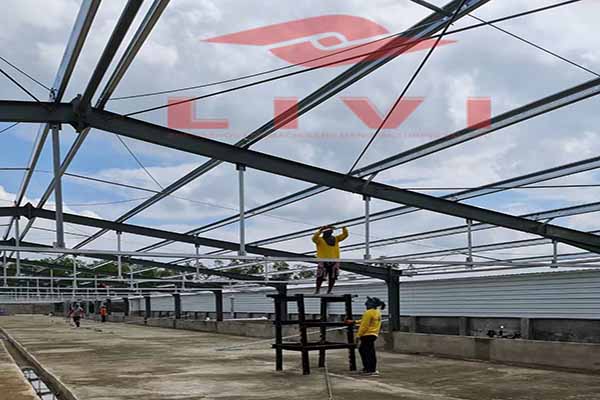Automatic Cages for 60,000 Chickens: A Case Study in Tanzania’s Poultry Industry
Introduction to Tanzania’s Poultry Sector
The poultry industry in Tanzania has seen significant growth in recent years, driven by an increasing demand for eggs and meat. With a growing population, the industry is facing the challenge of scaling up operations while maintaining high-quality production. One of the key innovations in this sector is the adoption of automatic cages for large-scale chicken farming.
Automatic Cages: A Game Changer for Efficiency
Automatic cages have revolutionized the way chickens are raised, especially in large-scale operations. These cages provide an optimal environment for chickens, ensuring their health and productivity. A typical setup for 60,000 chickens involves several key components:
– Space Optimization: Each chicken is provided with approximately 0.1 square meters of space, allowing for proper ventilation and light exposure.
– Automatic Feeding and Watering: With an automated feeding system, chickens are supplied with the right amount of feed, reducing waste and improving feed conversion ratios.
– Automatic Litter Removal: Automated systems remove droppings, which helps in maintaining hygiene and reduces the risk of disease.
Case Study: Automatic Cages in Tanzania
In Tanzania, a leading poultry farmer implemented automatic cages for 60,000 chickens. The results were remarkable:
– Reduced Labor Costs: By automating key tasks, the farm achieved significant labor cost savings.
– Increased Production: The chickens showed better growth rates, with a mortality rate lower than 5%.
– Health and Hygiene: The automatic systems ensured a clean environment, reducing the incidence of diseases.
Table: Key Features of Automatic Cages for 60,000 Chickens
| Feature | Description |
|---|---|
| Cage Size | Each cage holds approximately 100 chickens, providing adequate space for movement and growth. |
| Feeding System | Automatic feeding system with programmable feeding schedules to ensure optimal nutrition. |
| Watering System | Continuous water supply with a nipple watering system for easy access by the chickens. |
| Litter Removal | Automated litter removal system to maintain cleanliness and hygiene. |
Benefits of Adopting Automatic Cages
– Cost-Effective: Long-term savings due to reduced labor costs and improved feed conversion ratios.
– Efficient: Automated systems lead to more consistent and efficient production processes.
– Scalable: Ideal for large-scale poultry operations, making it easier to scale up without a proportional increase in labor.
Conclusion
Implementing automatic cages for 60,000 chickens in Tanzania has proven to be a successful strategy for poultry farmers. With the right setup and technology, farmers can achieve high productivity while maintaining a clean and healthy environment for their chickens.
For more information and to discuss your own automatic cage setup, leave us a comment below. Our team at Livi Mechanical is ready to assist you with a free chicken farming design plan and equipment quotation.





